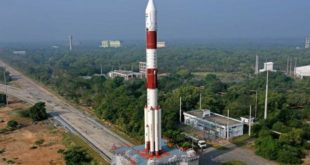With higher growth rates not having translated into more jobs and increases in productivity failing to spur a commensurate rise in wages, the government ought to formulate a National Employment Policy that takes these trends into account, the State of Working India 2018, a new study released by Azim Premji University’s Centre for Sustainable Employment, recommends. Confirming the spectre of jobless growth, the study contends that this divergence between growth and jobs had increased over time. “If you look back at the 1970s and 80s, when GDP growth was around 3-4%, employment growth was about 2%,” lead author Amit Basole wrote in the study, released on Tuesday. “Currently, the ratio of GDP growth to employment growth is less than 0.1.” That means that a 10% increase in GDP results in a less than 1% increase in employment. The study uses government data to show that total employment actually shrank by seven million between 2013 and 2015, and cites private data to posit that an absolute decline has continued in the years since. Unemployment has risen to more than 5% overall, and the study slices the data to show that in geographic terms, north Indian States are the most severely affected, while in demographic terms, young people with higher education levels suffer an unemployment rate as high as 16%. While wages are rising in almost all sectors, hidden within the positive data is the worrying fact that rural wage growth collapsed in 2014, and has not risen since, observed Dr. Basole. In the organised manufacturing sector, though the number of jobs has grown, there has also been an increase in the share of contract work, which offers lower wages and less job security, according to the study. Also, of concern is the divergence of productivity and wages in the organised manufacturing sector. Labour productivity in the sector is six times higher than it was 30 years ago; however, managerial and supervisory salaries have only tripled in the same period, while production workers’ wages have grown a measly 1.5 times. Women’s participation in the paid workforce is still low, but the situation is unequal across States. In Uttar Pradesh, only 20 women are in paid employment for every 100 men, while that figure jumps to 50 in Tamil Nadu and 70 in Mizoram and Nagaland.
Check Also
CMS-01
CONTEXT: Recently, the Indian Space Research Organisation (ISRO) has launched a communications satellite, CMS-01, on …
 Chinmaya IAS Academy – Current Affairs Chinmaya IAS Academy – Current Affairs
Chinmaya IAS Academy – Current Affairs Chinmaya IAS Academy – Current Affairs



